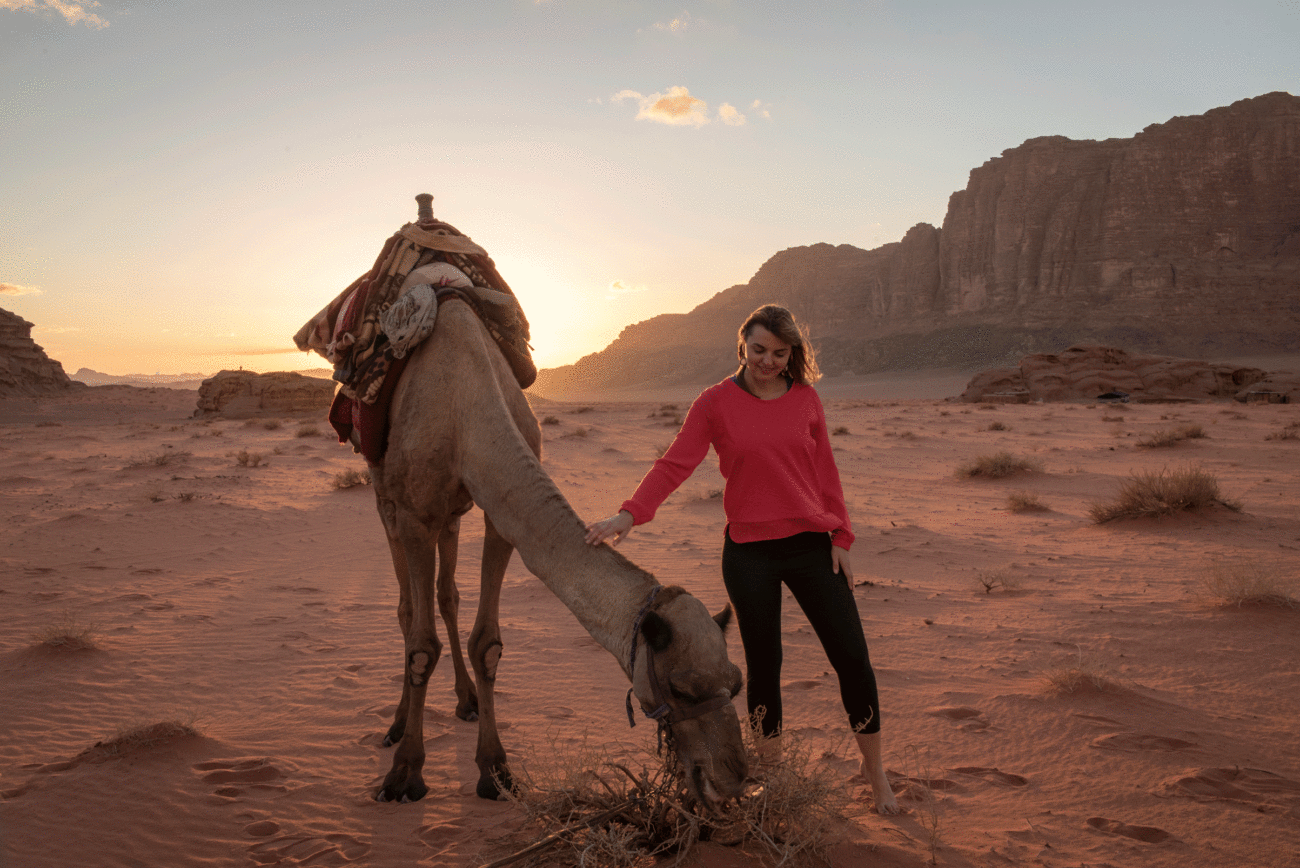
I have been seeing images of Wadi Rum all over social media and given my love for deserts in general, I knew we had to include it on our itinerary. The landscape of this Valley of the Moon, as it is known in Arabic, exceeded my expectations on all levels. To better understand what the place is really all about, imagine yourself a thousand years ago, in a land where nomadic herders rule the land and a caravan of brightly dressed camels appears on the horizon at any given time. The ways of life there are dictated by the availability of daylight and the ever subtly changing harsh environment of the desert…There is no electricity, no modern day buildings and everywhere you look, you are surrounded by sand and rock and mountains that all light up in deepest shades of red at sunset. You rise with the first rays of light and fall asleep with the darkness, lying underneath a dome of stars so dense and so bright you feel as if you’re floating in outer space…If all this seems like a dream, it’s because it really is. Or at least it seems like it is, for as long as your feet sink deep into the red sand and the gentle breeze of the desert wind cools your face, you know you are in fact not dreaming. Wadi Rum, after all, is as real as it can be.
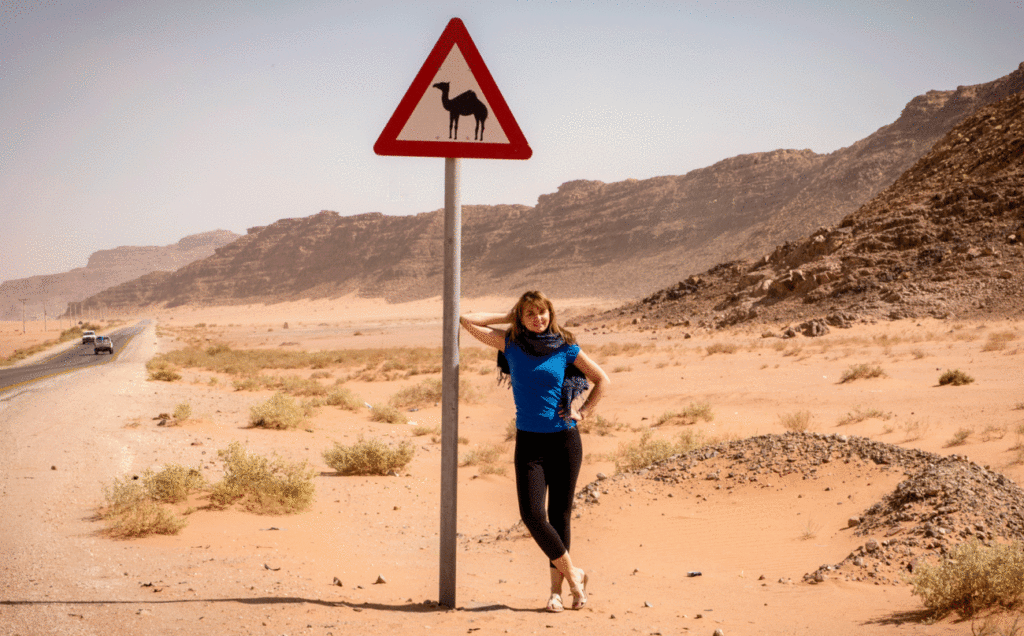
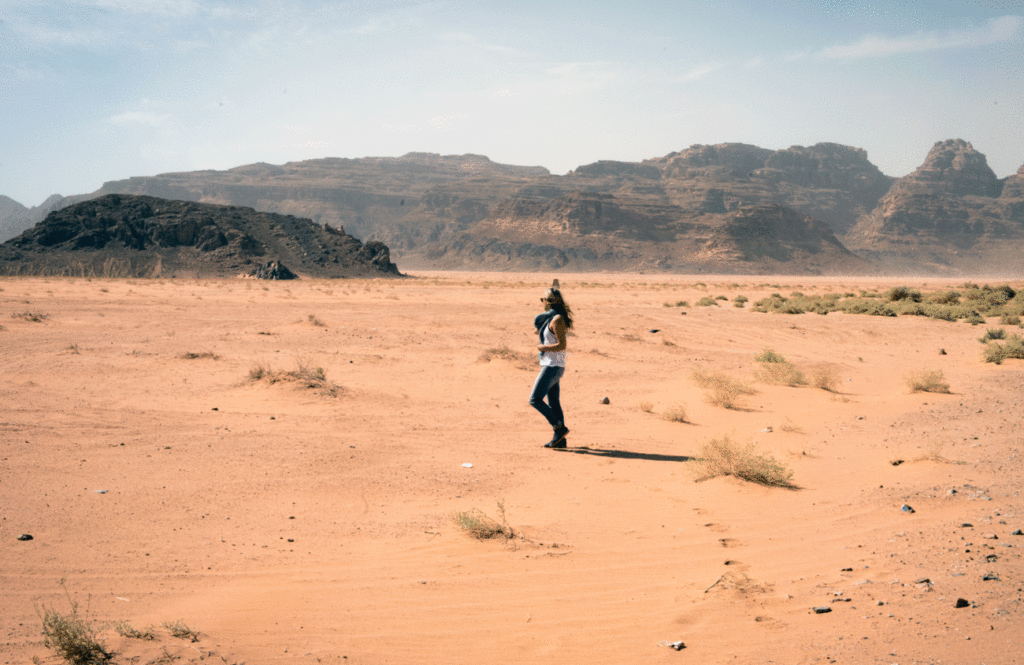
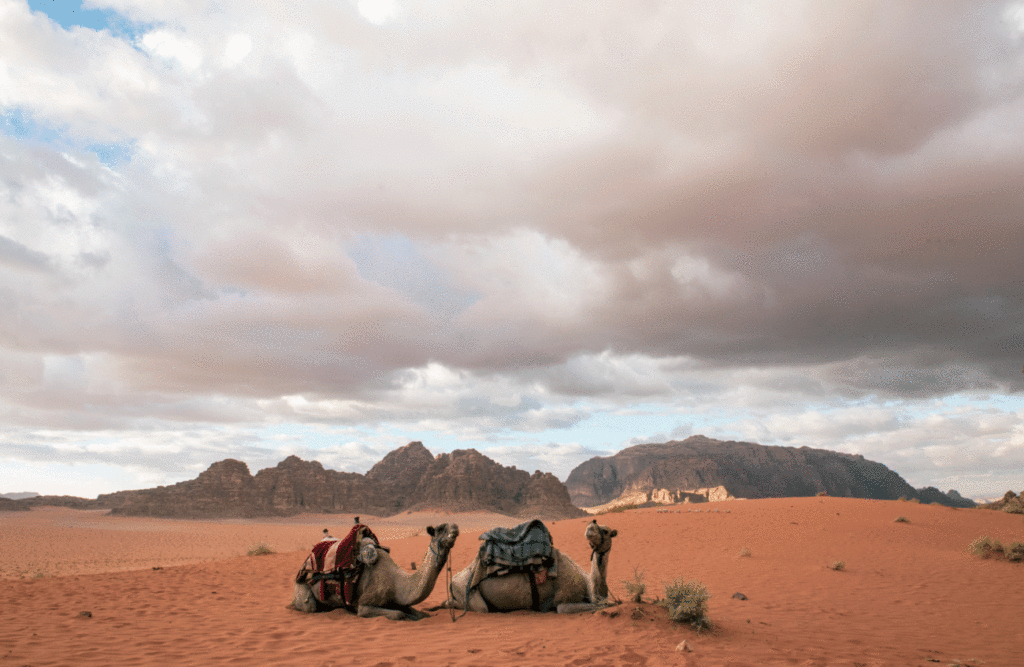
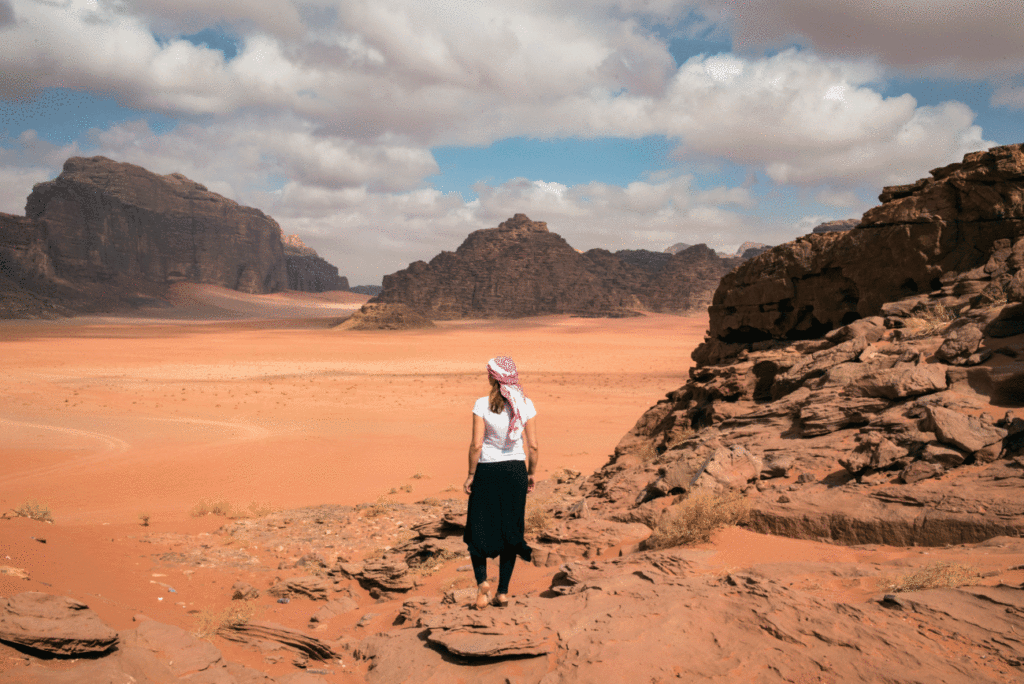
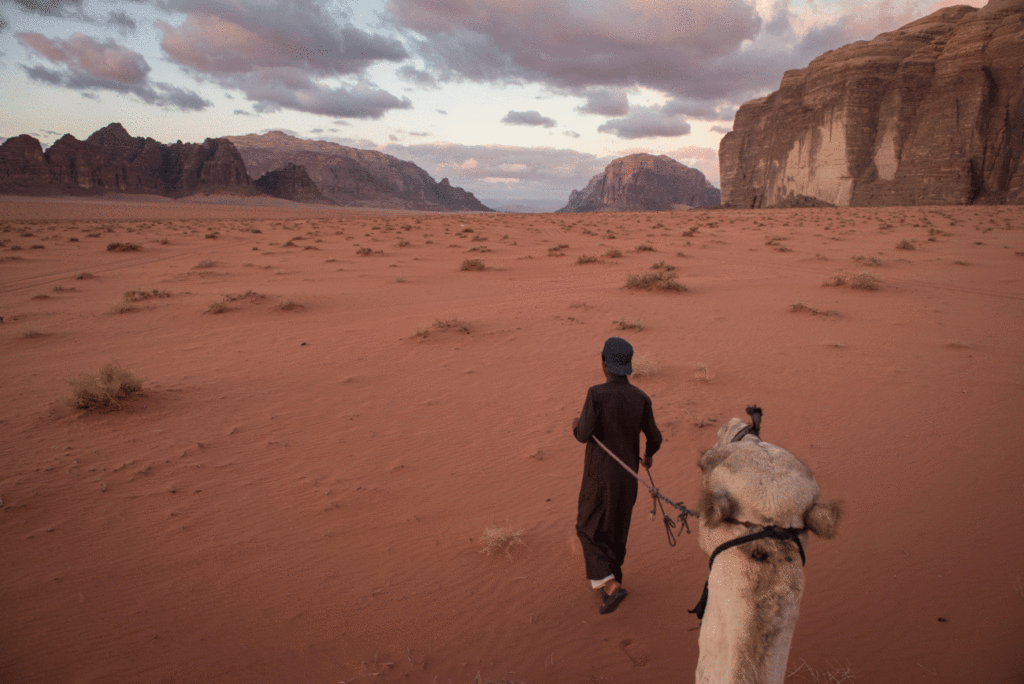
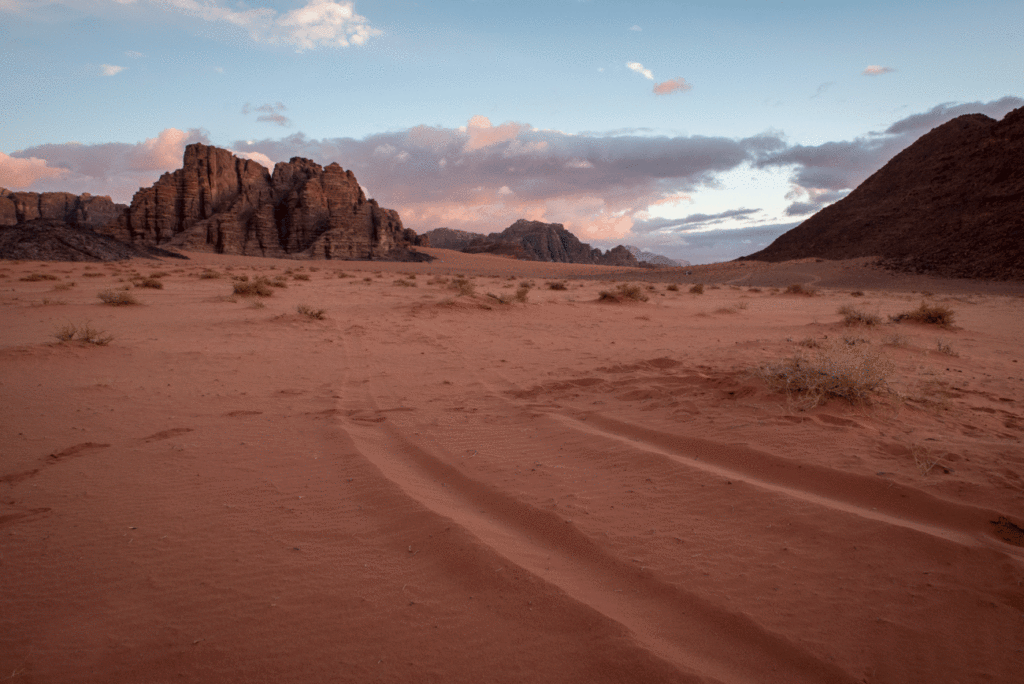
As magnificent as this desert really is, it has not been immune to the influences of modern life. This is most evident in the number of tourists that visit the place every year and the often not-so-pretty trails that they leave behind. It pains my heart to write about it this way, but I feel that the challenges Wadi Rum is facing today must be openly spoken about in order to preserve its splendor. The crux of the matter boils down to the paradox of its growing popularity and the need to conserve its pristine lands. The increasing flux of travelers into Jordan in the recent years has brought about many positive changes for the country and for Wadi Rum in general, but this is also closely tied to the negative environmental impact irresponsible tourism can carry with it.
The claws of modern life have been creeping up on Wadi Rum’s edges and are leaving a dreadful trail. For example, during one of our excursions throughout the desert, I noted how much trash is being left behind. Some of the more popular places in Wadi Rum that all the tourists flock into are becoming overcrowded and full of litter that no one is clearing up. I saw scattered plastic bottles underneath bushes, candy wrappers floating in the wind, and used plastic utensils buried in the sand. They will never decompose. They will not be recycled. With hundreds of visitors coming to Wadi Rum everyweek, what is the future of this magnificent place?
These thoughts have not escaped my mind, though I’ve returned home many days ago and I am as far from that environment as one can imagine. Wadi Rum has truly stolen my heart and I am currently brainstorming ideas on how to possibly prevent or at least delay the future degradation of this place. One of the things that I noticed immediately was how everyone gets water bottles to drink from while staying in the Bedouin tents and communities. There was plenty of water overall – but it all came in those dreadful plastic bottles of various sizes that do not get recycled. There is no recycling system in the desert, although everything gets imported from the nearby towns. So I am thinking, if everything gets imported, would it not make more sense economically and environmentally to import the large refillable water jugs and distribute reusable bottles to the tourists? Or what about installing a water filtration system in the camps? It may be a more expensive option to start, but I am certain that the investments would pay off tremendously in the future. At the suggestion of one my new Jordanian friends upon my return to Amman, I have decided to email the Jordanian ministry of tourism regarding this issue. Yes, I may never hear back from them, and yes, all of these discussions may fall on deaf ears, but I am absolutely compelled to take action on this behalf.
Regardless of all this, I’ve fallen in love with Wadi Rum and hope to visit this place again in the near future. I very highly recommend it to you all. Monika and I stayed for three days and I really wish it was longer. If you do visit, don’t hesitate to spend more time there, exploring the different corners of the land and taking advantage of all the things the Valley has to offer. Stay in one of the Bedouin villages, book a sunset camel ride, hike some of the mountains and fall asleep under the stars…Exploring Wadi Rum will become one of your most memorable travel moments, like it has become mine. Until then, I hope my photographs can convey to you the beauty of this splendid land and inspire within you the need to protect it at all costs. I believe as travelers and visitors to any foreign place, it is our responsibility to treat it with respect and care for its future. Travel should not be about going somewhere, snapping a few pictures and bragging about the trip on social media. We have to remain conscious of our actions abroad the same way we are conscious of them at home. Before any trip, it’s incredibly important to ask ourselves the questions: how does our trip affect the environment, the local community and its people? How can we reduce the negative impact of tourism when we travel? If we want to continue to travel the world and enjoy the beautiful places all over, we have to take responsibility for our actions and for the impact we leave behind.
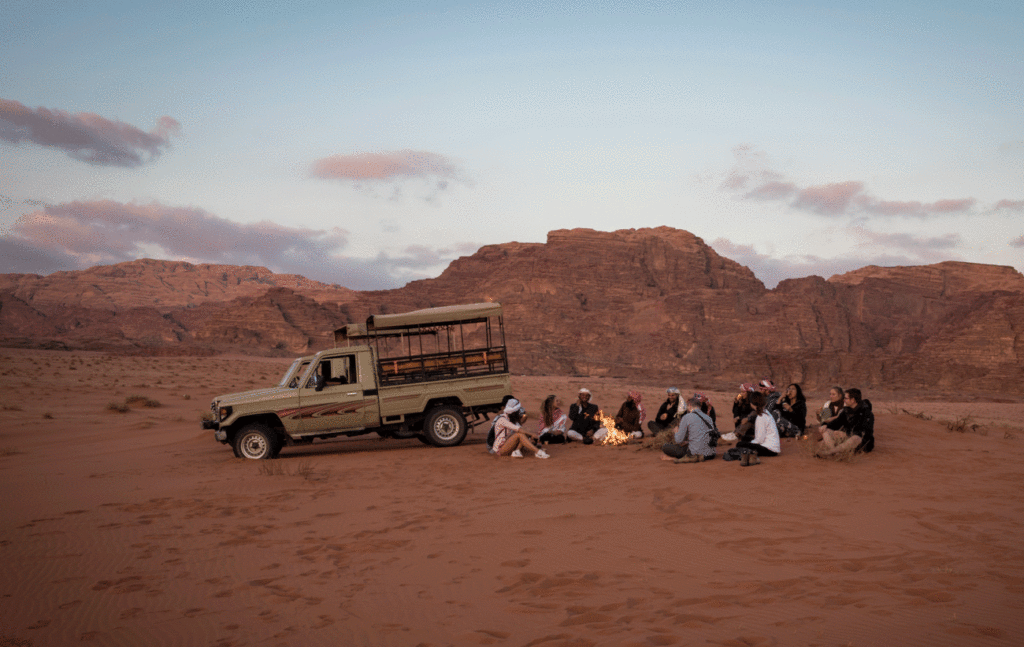
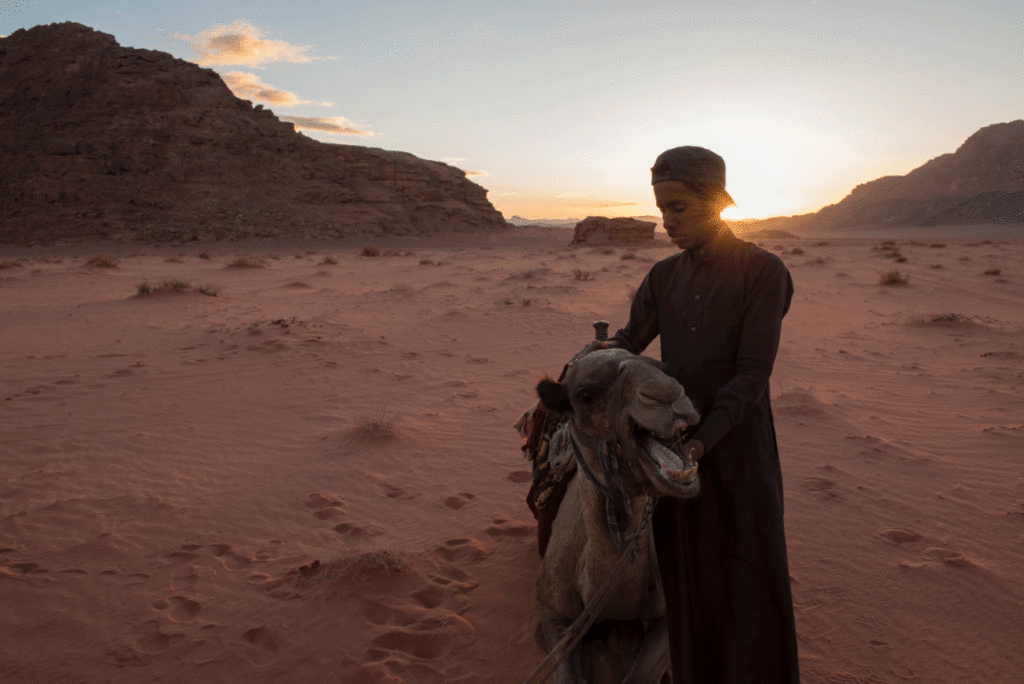
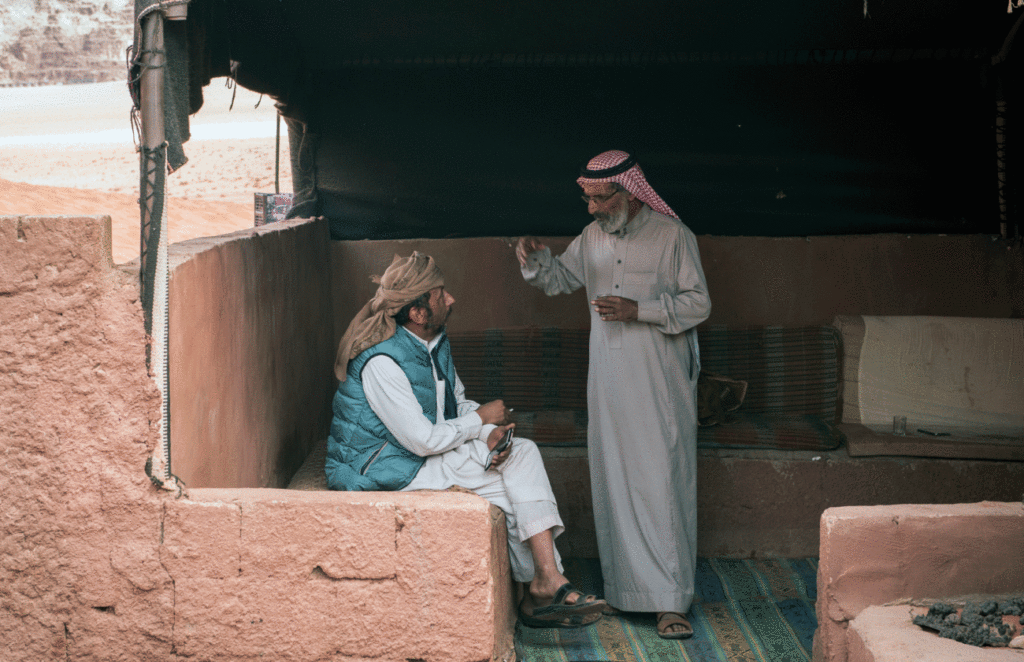
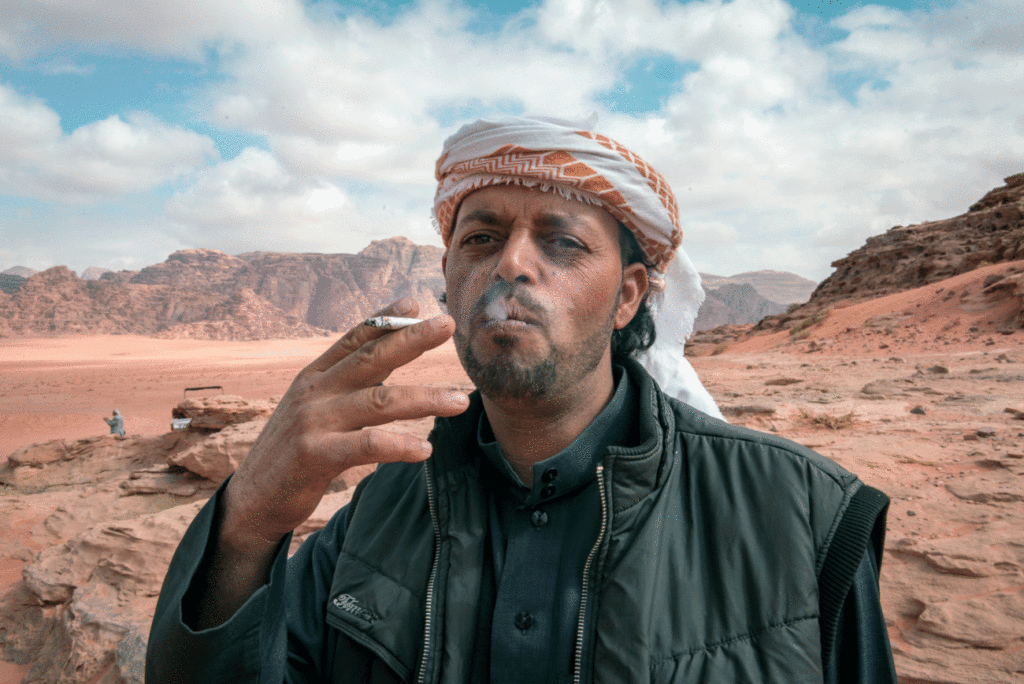
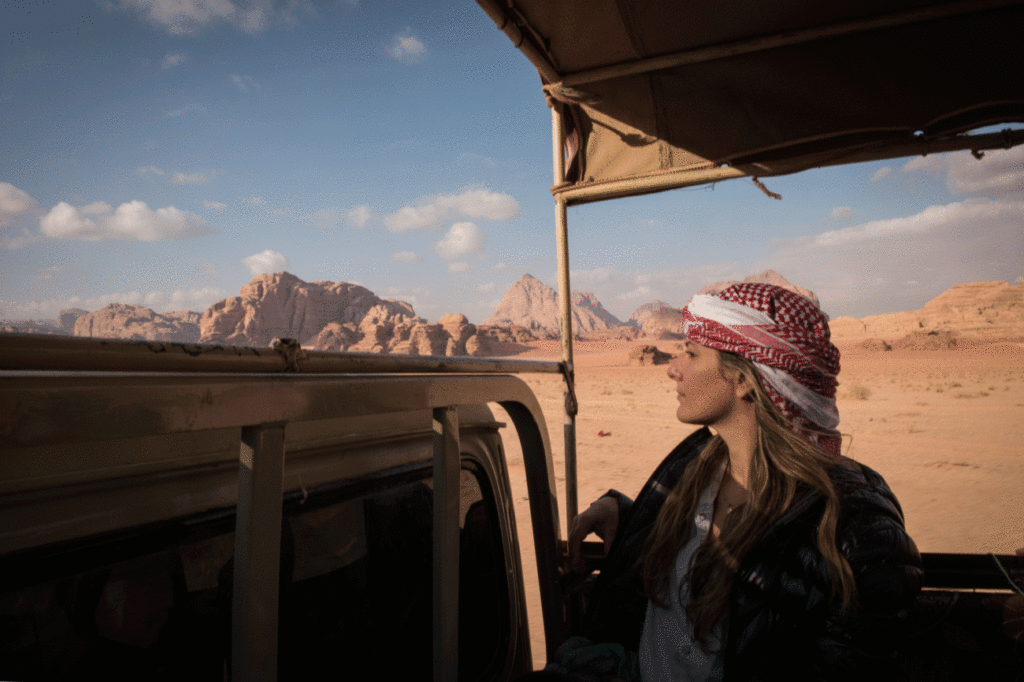
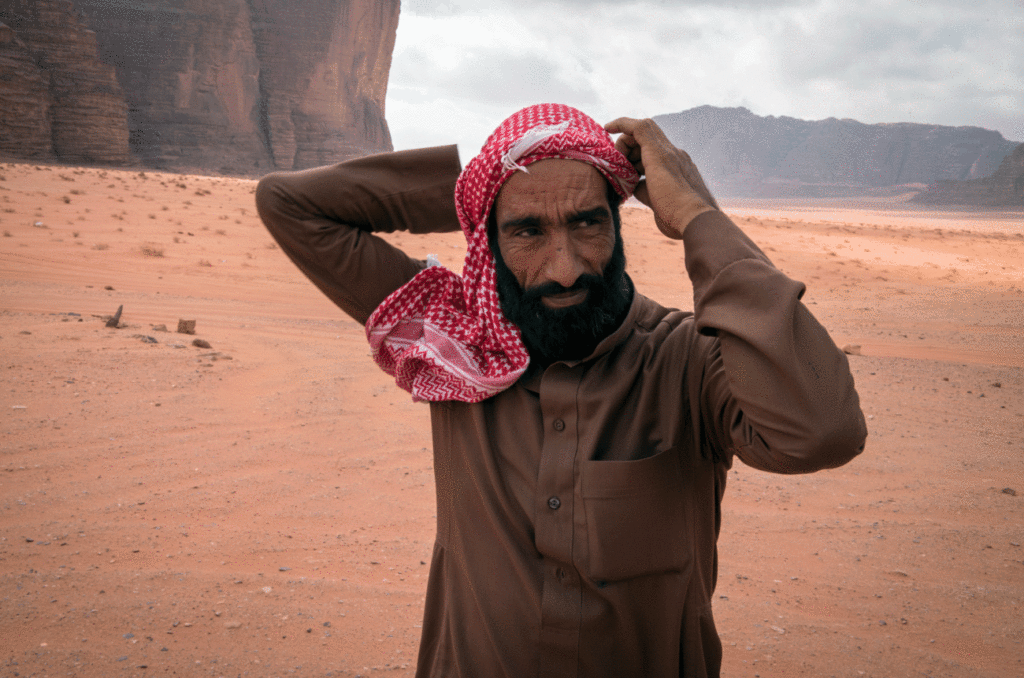
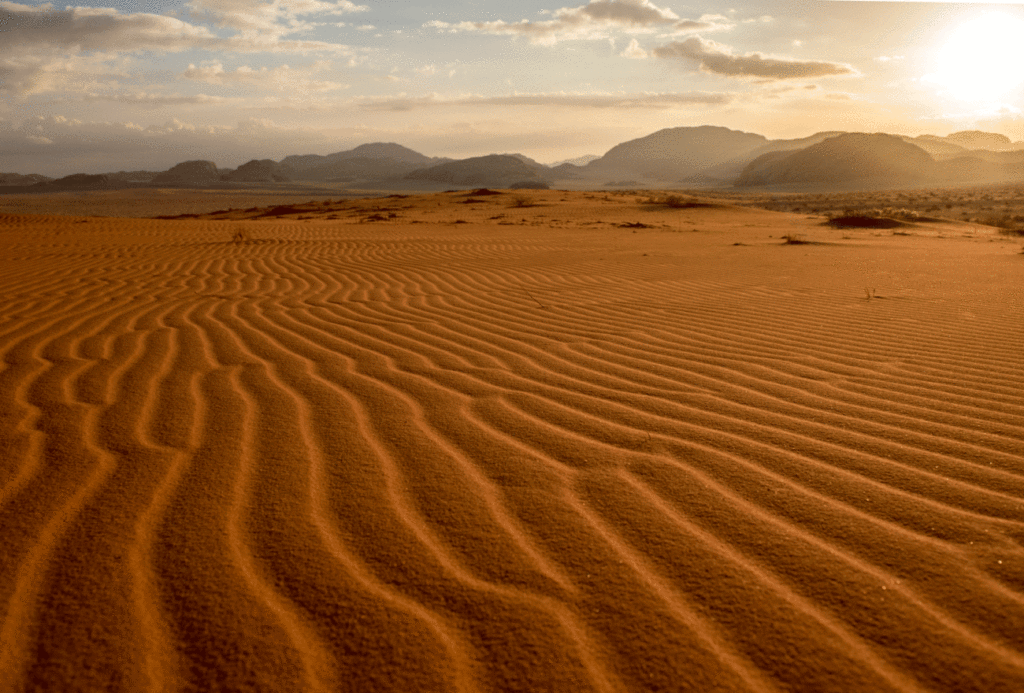
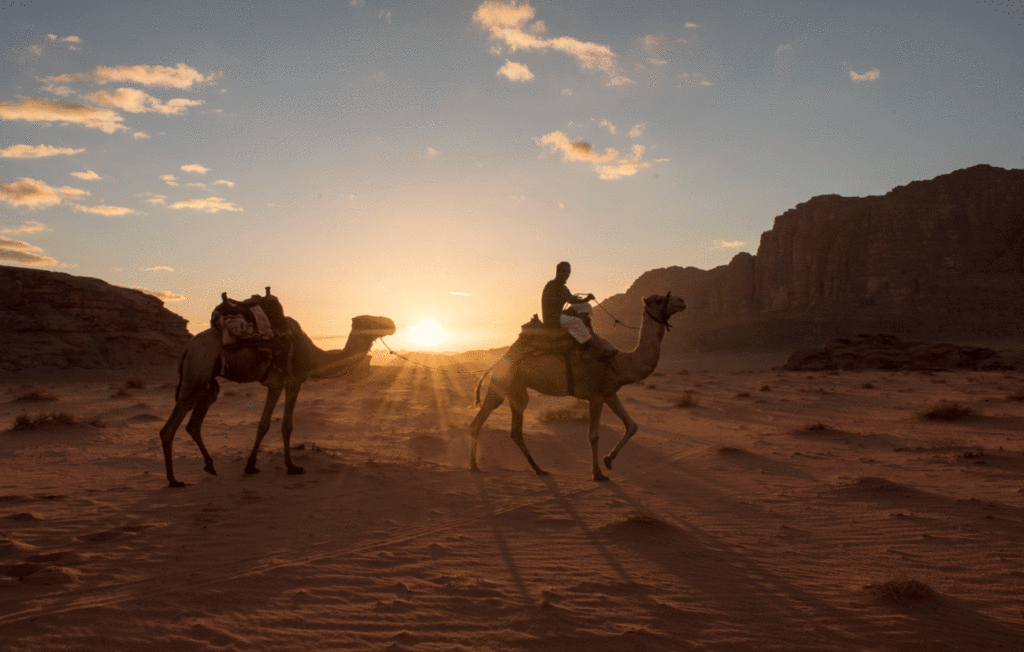
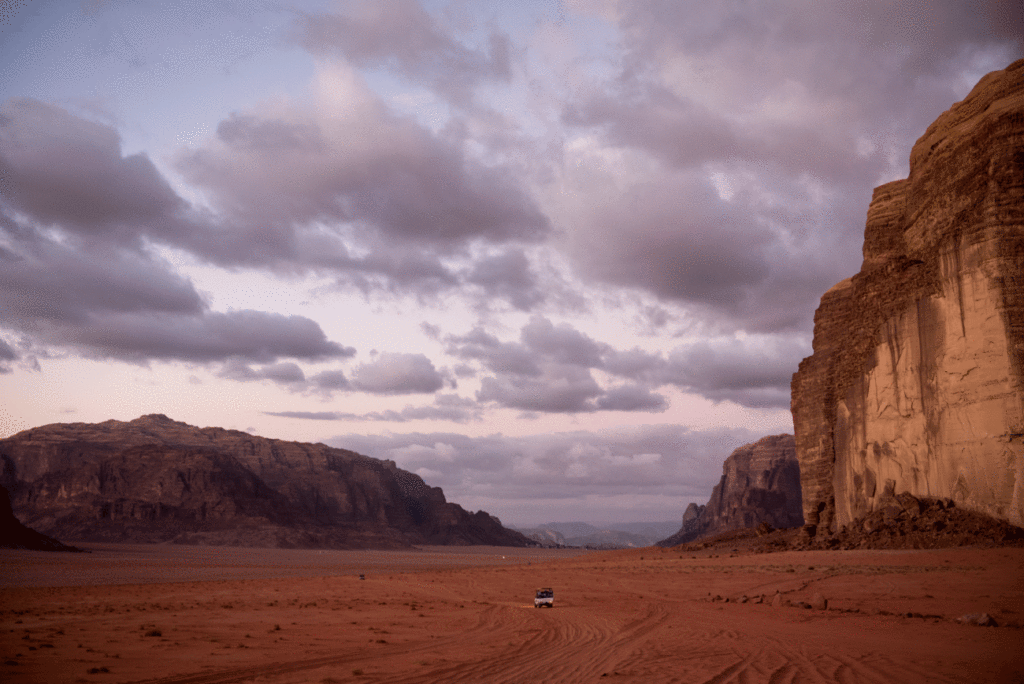
As I look through the Wadi Rum photographs I’ve taken and read through the travel notes I’ve written, the song that appears in my mind is this,
Night time on the desert
A blanket of blue above
Night time 0n the desert
Time to dream of love.
The light that I’m under is a moon big and pale
Somewhere out yonder, a coyote wails
Night time on the desert
Time to dream of love…
Marty Robins, Night time on the Desert
Related Posts
Dispatches from the Polish-Ukrainian Border
The dusk came quickly and it started to rain again. The chilly, damp air permeated…
April 13, 2022Must Visit Places on your Northern California Photo Itinerary
Every few months, my friend Sonia and I become very restless and decide to take…
November 21, 2021


noirewayfarer | 18th Dec 18
Great post! I totally agree about the need to be more mindful of our impact on the desert. Looking forward to my visit.